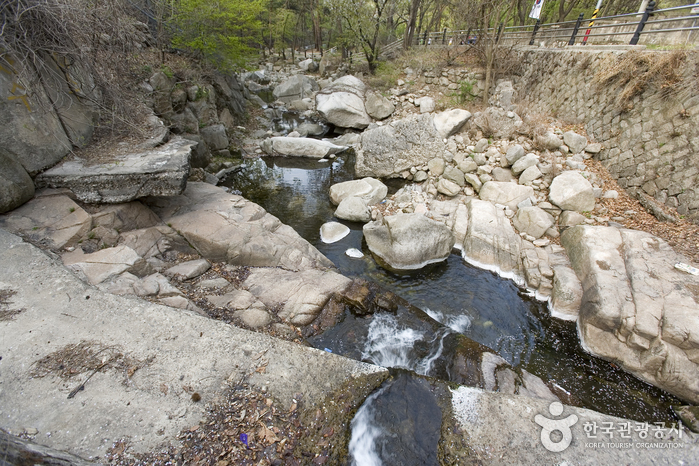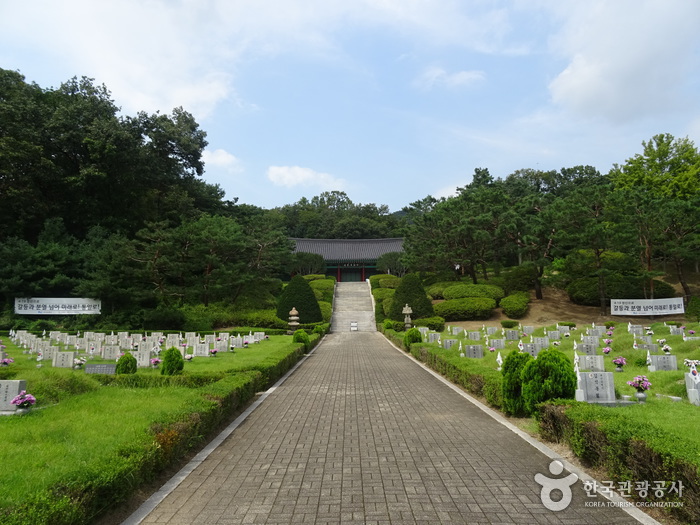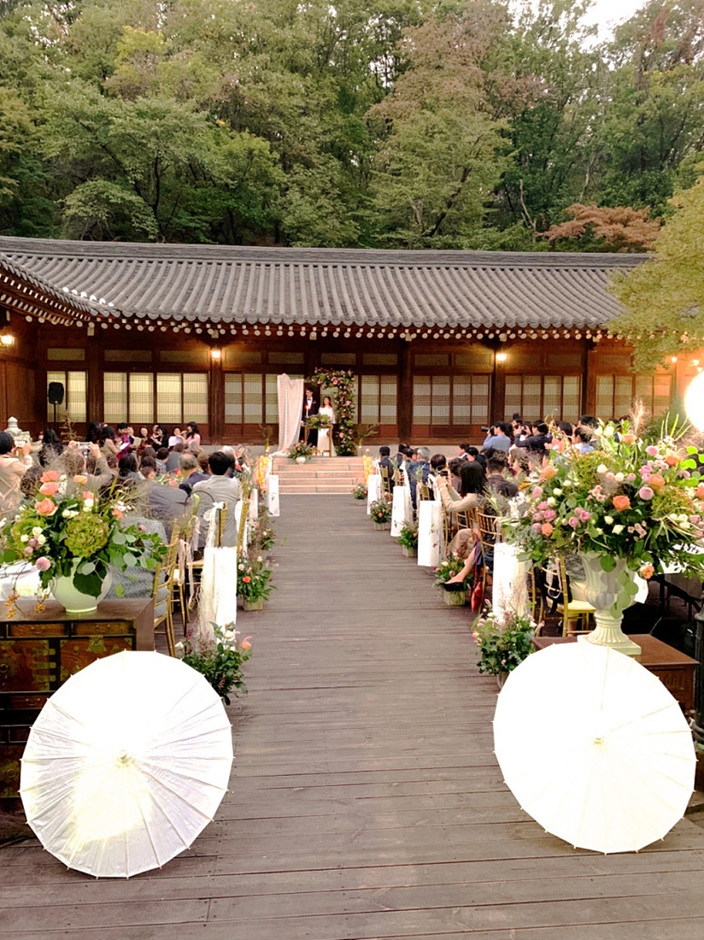Uidonggyegok Valley (우이동계곡)
4.5Km 2021-06-09
Ui-dong, Gangbuk-gu, Seoul
+82-2-909-0497
Uidonggyegok Valley is located between Bukhansan Mountain and Dobongsan Mountain, and is a popular retreat for locals. Near the entrance to the valley are accommodations, a playground, wedding hall, and other amenities. Clean water runs through the valley, and is lined with restaurants. The hiking path starting to the left of the valley entrance passes Doseonsa Temple on the way to Insubong Peak. The hiking path through the valley is quite difficult, but leads to Uiam Hermitage, and further to Dobongsan Mountain along the ridge. Additional temples in the area include Seongbulsa, Yongdeoksa, Seonunsa, and Gwangmyeongsa Temples.
100 Years Market 100 Years Night (백년시장 백년나이트)
4.5Km 2025-10-23
16 Hancheon-ro 144-gil, Gangbuk-gu, Seoul
+82-2-903-9110
100 Year Market, a traditional market with a long history, transforms into a vibrant night market as evening falls. With a mini mirror ball, neon signs, and a mini DJ booth alongside new dining options each month, this retro-themed market is perfect for visitors of all ages.
DOWON TOUR (도원국제여행사)
4.8Km 2025-10-23
(#323), 9 Gongneung-ro 59ga-gil, Nowon-gu, Seoul
Based on my previous experience as a Korean and Japanese language guide in China, I established Dowon International Travel Agency in 2023.
Our main focus is on medical tourism for Chinese clients, offering not only tours of popular destinations and shopping in Korea, but also services for VIP guests such as plastic surgery and health checkups.
Hottracks - Suyu Branch [Tax Refund Shop] (핫트랙스 수유점)
4.8Km 2024-04-18
348, Dobong-ro, Gangbuk-gu, Seoul
-
April 19th National Cemetery (국립4.19민주묘지)
5.0Km 2023-01-02
17, 4.19-ro 8-gil, Gangbuk-gu, Seoul
+82-2-996-0419
Located at the foot of Bukhansan Mountain, the April 19th National Cemetery was established in memory of the 224 people who lost their lives during the 4.19 Revolution in 1960. The cemetery features a memorial hall and a traditional wooden structure that houses the grave of the historic figure Yu Yeongbong.
At the cemetery is a pond surrounded by sculptures such as "Symbolic Door," "Roots of Democracy," and "Sparks of Justice" and a memorial tower bearing an inscription for the brave patriots who lost their lives during the revolution. Groves of pine, juniper, yew, and maple trees and the well-kept hiking path add a natural charm to the overwhelming ambiance of peace and serenity. Many people visit to see the spring blossoms in May, and throughout the year to take in the glorious scene of the sunset over Bukhansan Mountain.
Seonungak (한옥카페 선운각)
5.0Km 2025-10-29
223 Samyang-ro 173-gil, Gangbuk-gu, Seoul
Seonungak is a hanok cafe facing Doseonsa Temple at the foot of Bukhansan Mountain, the perfect location to take in the beauty of the changing seasons. The cafe is also the largest hanok building outside of the royal palaces in Seoul. Previously limited to weddings and filming events, the hanok has reopened as a cafe, selling a range of traditional Korean drinks.
Wonder Place - Suyu Branch [Tax Refund Shop] (원더플레이스 수유)
5.2Km 2024-04-22
308, Dobong-ro, Gangbuk-gu, Seoul
-
E-Mart Traders - Wolgye Branch [Tax Refund Shop] (이마트트레이더스 월계)
5.4Km 2024-04-17
15, Madeul-ro 3-gil, Nowon-gu, Seoul
-
E-Mart - Wolgye Branch [Tax Refund Shop] (이마트 월계)
5.4Km 2024-04-22
15, Madeul-ro 3-gil, Nowon-gu, Seoul
-
Lotte Mart - Jangam Branch [Tax Refund Shop] (롯데마트 장암점)
5.4Km 2024-04-22
224, Janggok-ro, Uijeongbu-si, Gyeonggi-do
-





![E-Mart Traders - Wolgye Branch [Tax Refund Shop] (이마트트레이더스 월계)](http://tong.visitkorea.or.kr/cms/resource/74/2888274_image2_1.jpg)
![Lotte Mart - Jangam Branch [Tax Refund Shop] (롯데마트 장암점)](http://tong.visitkorea.or.kr/cms/resource/28/2881328_image2_1.jpg)
 English
English
 한국어
한국어 日本語
日本語 中文(简体)
中文(简体) Deutsch
Deutsch Français
Français Español
Español Русский
Русский